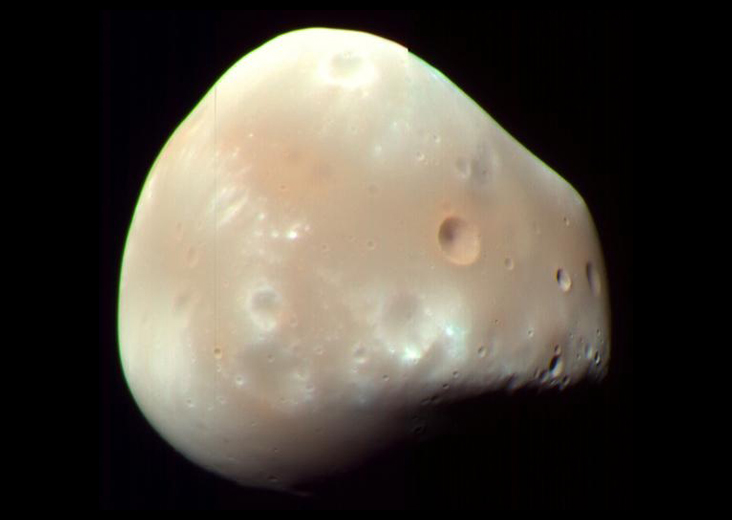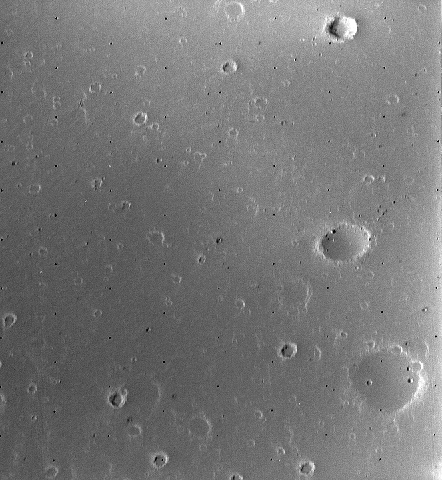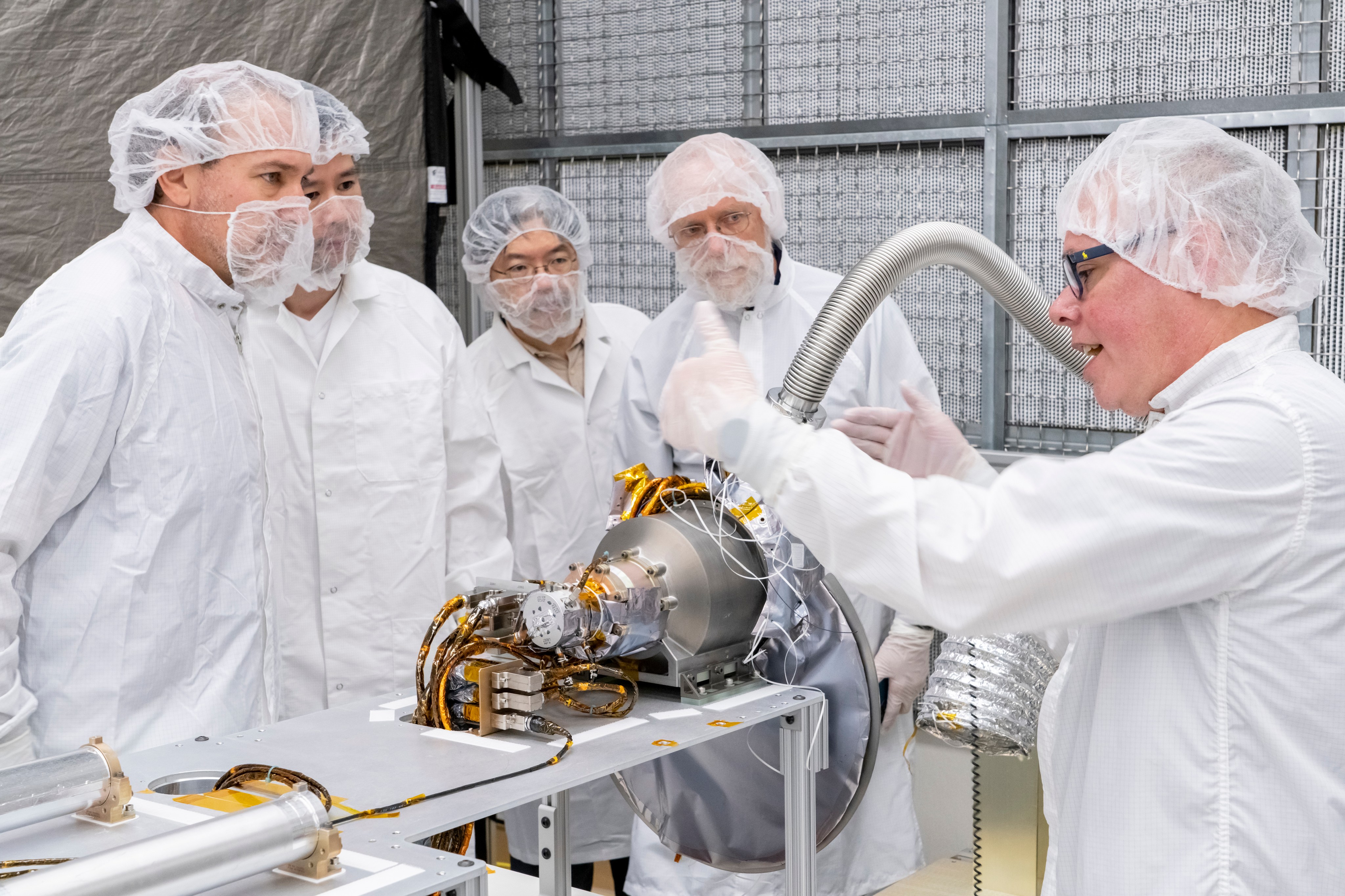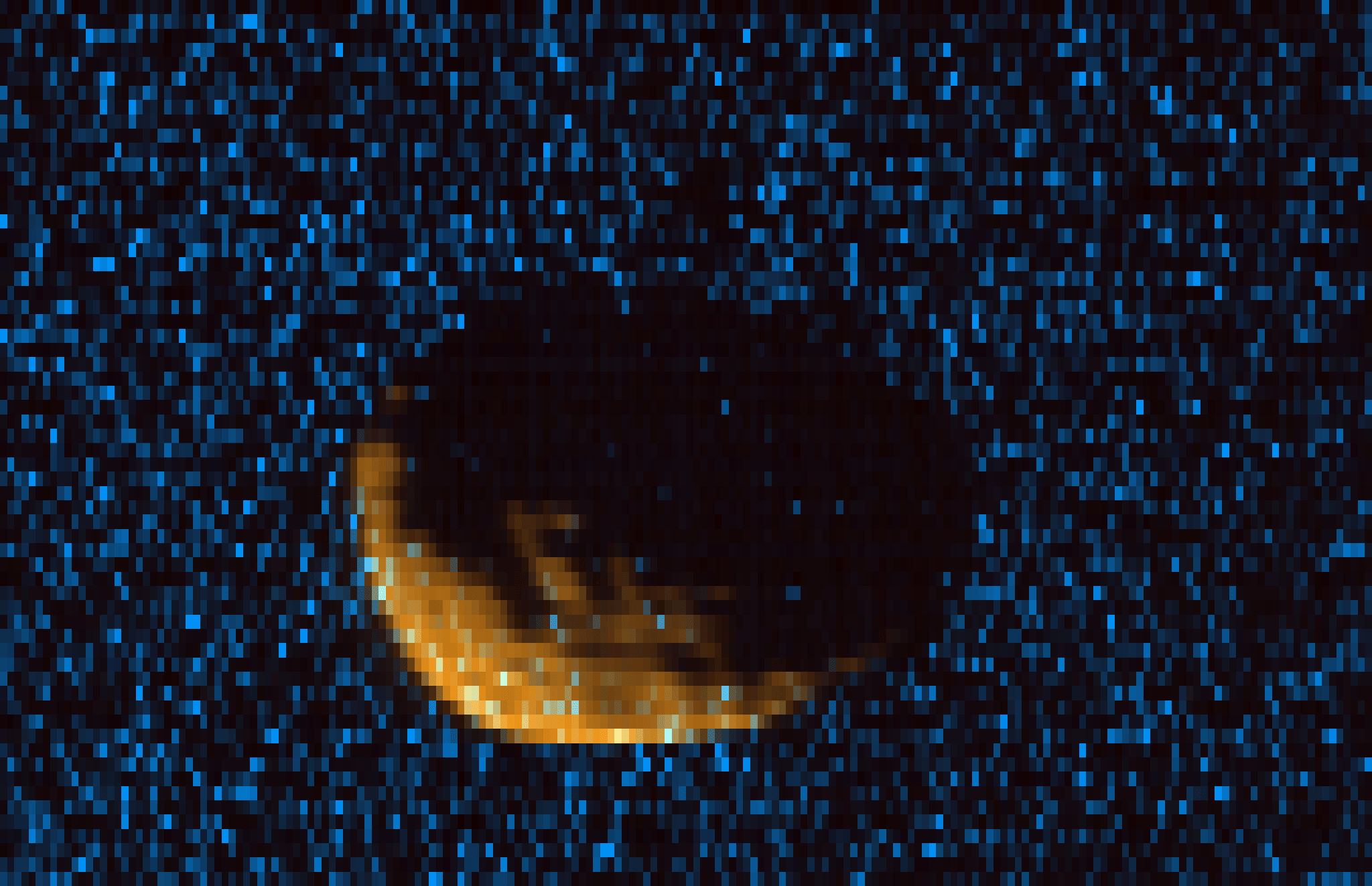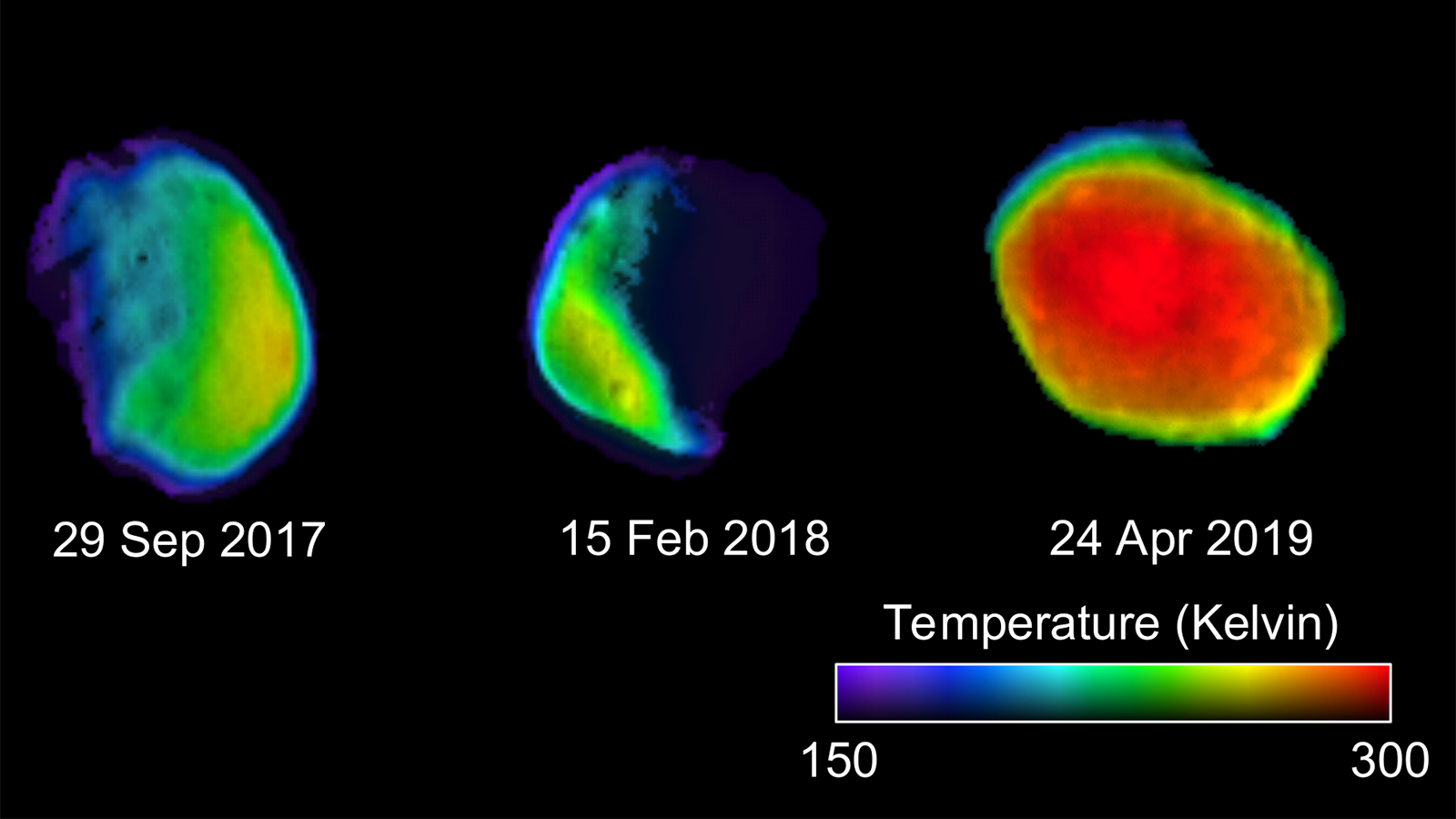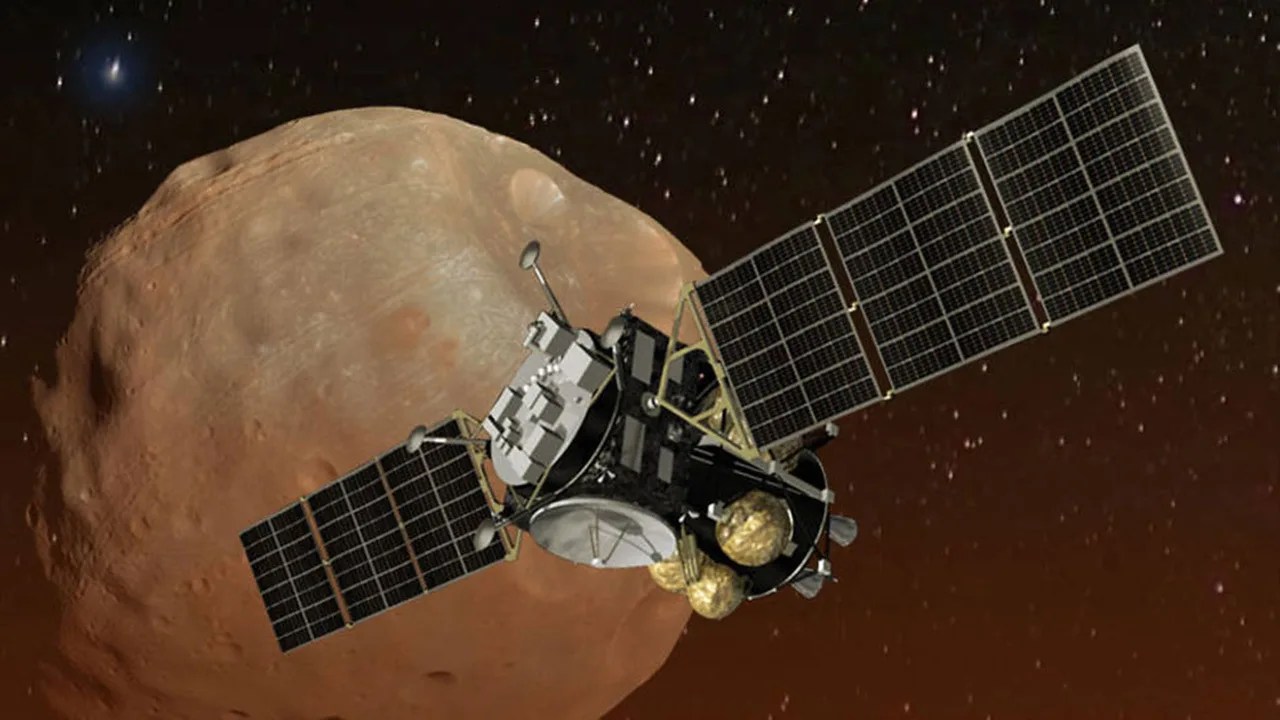Deimos
Deimos is the smaller of Mars' two moons. It's 9 by 7 by 6.8 miles in size (15 by 12 by 11 kilometers). Deimos orbits Mars every 30 hours.
Quick Facts
About Deimos
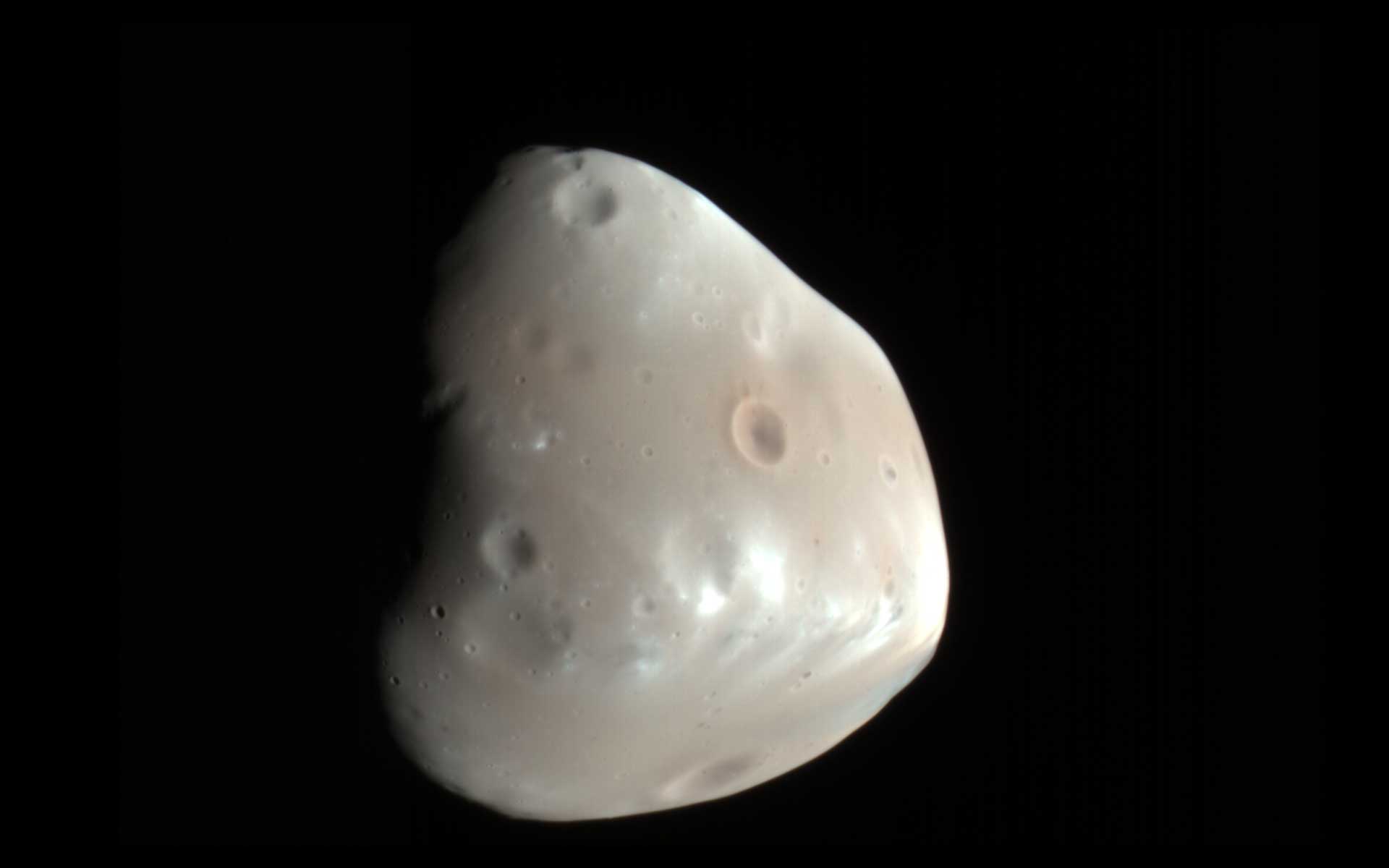
Like Phobos, Deimos is a small and lumpy, heavily cratered object. Its craters are generally smaller than 1.6 miles (2.5 kilometers) in diameter, however, and it lacks the grooves and ridges seen on Phobos. When impacted, dust and debris will leave the surface of the moon because it doesn't have enough gravitational pull to retain the ejecta. However, the gravity from Mars will keep a ring of this debris around the planet in approximately the same region that the moon orbits. As the moon revolves, the debris is redeposited as a dusty layer on its surface.
Deimos has a thick regolith, perhaps as deep as 328 feet (100 meters), formed as meteorites pulverized the surface.
Deimos is a dark body that appears to be composed of C-type surface materials, similar to that of asteroids found in the outer asteroid belt.
How Deimos Got its Name
Deimos was discovered on Aug. 11, 1877 by Asaph Hall. Hall named Mars' moons for the mythological sons of Ares, the Greek counterpart of the Roman god, Mars. Deimos, whose name means dread, is the brother of Phobos.

